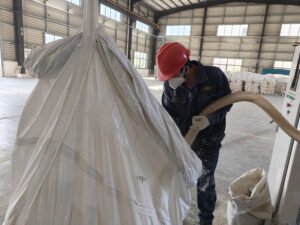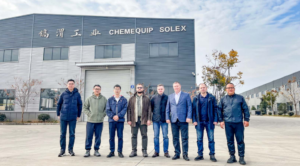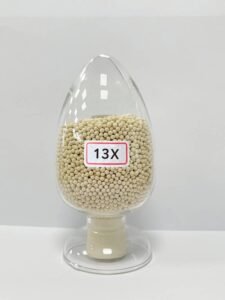Sulfur dioxide removal is crucial for environmental protection and industrial processes. Finding the right molecular sieve can make all the difference.
The primary molecular sieve used to adsorb sulfur dioxide is the 13X molecular sieve, known for its high efficiency and reliability.
Understanding the best methods for sulfur dioxide removal can significantly impact both environmental and industrial outcomes. Let’s explore the options available.
What is the molecular sieve for H2S removal?
Hydrogen sulfide (H2S) removal is essential in many industrial applications to ensure safety and environmental compliance.
For H2S removal, molecular sieves like 5A and 13X are commonly used due to their effective adsorption properties.
Delving deeper into H2S removal methods reveals the strengths and limitations of different molecular sieves.
Understanding Molecular Sieves for H2S Removal
Molecular sieves are engineered to selectively adsorb specific molecules based on size and polarity. When it comes to H2S removal, the choice of molecular sieve plays a pivotal role in the efficiency of the process.
Types of Molecular Sieves Used for H2S Removal
| Molecular Sieve Type | Pore Size (Angstroms) | Adsorption Capacity | Regeneration Method |
|---|---|---|---|
| 5A | 5 | High for H2S | Thermal regeneration |
| 13X | 10 | Moderate for H2S | Pressure swing |
| 4A | 4 | Low for H2S | Chemical regeneration |
5A molecular sieves are highly effective for H2S removal due to their smaller pore size, which selectively targets H2S molecules. 13X sieves offer a balance between adsorption capacity and regeneration ease, making them versatile for various industrial applications. On the other hand, 4A sieves are less effective for H2S but can be used in specific scenarios where other contaminants are present.
Choosing the right sieve depends on factors like the concentration of H2S, the presence of other gases, and the operational conditions of the facility. For instance, in environments where high concentrations of H2S are present, 5A molecular sieves are preferred due to their superior adsorption capacity. However, in settings where regeneration frequency is a concern, 13X sieves might be more appropriate despite their slightly lower adsorption capacity.
Furthermore, the regeneration method is crucial for maintaining the efficiency of the sieve. Thermal regeneration is commonly used for 5A sieves, allowing them to be reused multiple times with minimal loss in performance. Pressure swing regeneration is another method used for 13X sieves, which involves cycling the pressure to release adsorbed H2S, thus preparing the sieve for the next adsorption cycle.
In conclusion, the choice of molecular sieve for H2S removal should be based on a comprehensive assessment of the specific requirements of the application, ensuring optimal performance and cost-effectiveness.
What are the different types of molecular sieves?
Molecular sieves come in various types, each designed for specific applications and adsorption capabilities.
Different types of molecular sieves include 3A, 4A, 5A, and 13X, each with unique pore sizes and functionalities.
Exploring the variety of molecular sieves helps in selecting the right one for your specific needs.
Exploring the Variety of Molecular Sieves
Molecular sieves are categorized based on their pore sizes and the materials from which they are made. Understanding these differences is key to selecting the appropriate sieve for a given application.
Common Types of Molecular Sieves
| Molecular Sieve Type | Pore Size (Angstroms) | Common Applications |
|---|---|---|
| 3A | 3 | Drying solvents, natural gas sweetening |
| 4A | 4 | Air drying, refrigeration systems |
| 5A | 5 | Gas purification, H2S removal |
| 13X | 10 | Sulfur dioxide removal, hydrocarbon dehydration |
3A molecular sieves have a pore size of 3 angstroms, making them ideal for removing water from solvents and sweetening natural gas by adsorbing hydrogen sulfide. 4A sieves are slightly larger, with a 4 angstrom pore size, suitable for air drying and use in refrigeration systems to prevent moisture-related issues.
5A molecular sieves with a 5 angstrom pore size are versatile, used in gas purification processes and specifically in H2S removal. They strike a balance between pore size and adsorption capacity, making them suitable for a variety of industrial applications.
13X molecular sieves are among the most widely used due to their 10 angstrom pore size, which allows them to adsorb larger molecules like sulfur dioxide and hydrocarbons. Their high surface area and strong adsorption capabilities make them a staple in industries requiring effective gas purification solutions.
Choosing the right type of molecular sieve depends on the specific requirements of the process, including the size of the molecules to be adsorbed, the presence of multiple contaminants, and the operational conditions such as temperature and pressure. Additionally, the regeneration method and the lifespan of the sieve are important considerations to ensure cost-effectiveness and sustainability in industrial applications.
By understanding the distinct properties and applications of each type of molecular sieve, industries can optimize their processes, enhance efficiency, and reduce operational costs. Whether it's drying solvents, purifying gases, or removing harmful contaminants, selecting the appropriate molecular sieve is crucial for achieving desired outcomes.
What is the use of 13X molecular sieve?
The 13X molecular sieve is highly effective in various applications due to its unique properties and versatility.
13X molecular sieves are used for sulfur dioxide removal, hydrocarbon dehydration, and air drying, among other applications.
Delving into the specific uses of 13X molecular sieves reveals their importance in industrial processes.
Applications of 13X Molecular Sieve
The 13X molecular sieve is renowned for its high adsorption capacity and versatility, making it a preferred choice in numerous industrial applications.
Key Uses of 13X Molecular Sieve
| Application Area | Description |
|---|---|
| Sulfur Dioxide Removal | Efficiently adsorbs SO₂ from gas streams to reduce emissions |
| Hydrocarbon Dehydration | Removes water from hydrocarbons to prevent pipeline corrosion |
| Air Drying | Eliminates moisture from compressed air systems to protect equipment |
| Natural Gas Processing | Adsorbs impurities like CO₂ and H₂S to purify natural gas |
| Refrigeration Systems | Maintains dryness in refrigeration cycles to enhance performance |
In the context of sulfur dioxide removal, the 13X molecular sieve effectively captures SO₂ molecules, helping industries comply with environmental regulations and reduce harmful emissions. Its ability to adsorb larger molecules compared to other sieves like 5A makes it particularly suitable for this application.
For hydrocarbon dehydration, the 13X sieve removes water from hydrocarbon streams, which is essential to prevent pipeline corrosion and ensure the efficiency of downstream processes. The high surface area of 13X sieves allows for significant water adsorption, ensuring that the hydrocarbons remain dry and stable.
In air drying, 13X molecular sieves play a crucial role in eliminating moisture from compressed air systems. This not only protects the equipment from corrosion and wear but also ensures the quality of the air used in various industrial processes. The sieve's high adsorption capacity ensures effective moisture removal even in high-humidity environments.
Natural gas processing benefits from the 13X sieve's ability to remove impurities like carbon dioxide (CO₂) and hydrogen sulfide (H₂S). By purifying natural gas, the 13X sieve enhances the quality of the gas, making it suitable for commercial and residential use while adhering to safety and environmental standards.
Lastly, in refrigeration systems, 13X molecular sieves help maintain dryness in the refrigerant cycles, which is vital for the efficient operation of refrigeration units. By removing moisture, the sieves prevent ice formation and corrosion within the system, thereby extending the lifespan of the equipment and ensuring reliable performance.
Overall, the 13X molecular sieve is a versatile and essential component in various industrial applications, offering high efficiency and reliability in adsorption processes. Its widespread use underscores its importance in maintaining industrial standards and enhancing operational efficiency.
Conclusion
Choosing the right molecular sieve, especially 13X, is key to effective sulfur dioxide removal and other industrial applications.






